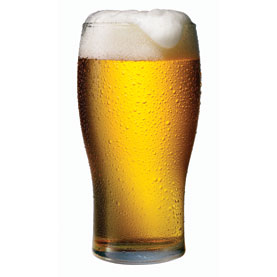How to Lose 15 Pounds
Losing weight is a combination of eating right and getting plenty of exercise. You'll need to be mindful of your portion sizes, the types of foods you eat and how often you're being active. After a few weeks or months, this type of lifestyle should result in safe and sustainable weight loss. This type of weight loss is much safer for you and will help you maintain a healthy weight long term. When you follow a modified lifestyle like this and keep in touch with your doctor regularly, you'll be able to lose 5, 10 or even 15 pounds.
Steps
Part 1 Creating a Healthy Strategy
-
1
Talk to your doctor. Whenever you're trying to lose weight, its a good idea to talk to your doctor first. Your doctor will be able to give you great insight into how to lose weight and do it in a healthy and safe manner.
- If you think you need to lose 15 pounds, give your doctor a call. He or she will be able to help you determine whether or not 15 pounds is appropriate for you.
- Ask your doctor if they have any diet or exercise suggestions or limitations for you. This way you will be sure that what you're following will be beneficial and not harmful to your health.
- If you're having difficulty losing weight, get back in touch with your doctor. Ask if they are aware of any medically supervised diets or a local dietitian that you could work with.
-
2
Set realistic expectations. With any diet, it's important to set very realistic expectations and goals. If you want to lose 15 pounds and keep it off long-term, you need to set yourself up for success.[1]
- In general, it's never recommended to lose more than 1-2 pounds per week.
- Although this might sound slow or tedious to you, this type of weight loss has been proven to be the most sustainable long-term.
- If you want to lose 15 pounds, you need to plan to follow your diet and lifestyle plan for about 2 months. Set up a calendar and goals for that timeline.
- Also, talk further with your doctor. He or she can recommend an appropriate rate and amount of weight loss for you.
-
3
Avoid fad diets. Diets that promise quick weight loss or a lot of weight loss in a short period of time are generally not considered safe or sustainable. Much of the weight lost during crash or fad diets is regained quickly after they end.[2]
- You can tell a fad diet if you see claims like "lose 10 pounds in 10 days" or "drop 2 pants sizes in a week."
- Fad or crash diets usually rely on exceptionally low calorie diets that are lacking a large variety of vitamins and minerals.
- They are not considered safe and they are never a recommended method for losing weight.
-
4
Consider starting a food journal. A helpful tool that can keep you on track with your diet and lead to better success is a food journal. It's easy to keep and will help you meet your weight loss goals.
- Studies have shown that those people who track their foods more regularly are able to lose more weight and have an easier time keeping it off.[3]
- Having to track the foods you eat helps keep you accountable and honest. Try to track your foods as many days of the week as you can.
- To help you, consider downloading a food journaling app or purchase a pen and paper journal.
- Track everything you eat - every breakfast, lunch, dinner, snack and beverage. The more you track, the more accurate your journal will be.
-
5
Make a meal and exercise plan. Another great tool to use for your diet is a meal and exercise plan. Both of these items can serve as a guide and a schedule for what you're supposed to be eating or what exercise you're supposed to be doing each day.
- A meal plan is a document that you create that will outline ever breakfast, lunch, dinner and snack during a week's time period.
- Spend a few minutes to write down what you're planning to have for the upcoming week. Use this as a guide. It'll help keep you on track and prevent you from going out to eat or eating something too high calorie.
- An exercise plan is almost identical. However, you need to schedule in when you're going to exercise, for how long and what type of exercise you're going to do.
- When your exercise is pre-scheduled, you know that you have the time to do it, making it more likely you'll stick to your exercise plan.
-
6
Plan to reward yourself. One fun thing about losing weight or meeting any other type of goal are the rewards. Set up some fun rewards or treats for yourself as you meet your goals.
- When you've created your outline, also create a timeline for rewards. For example, you might want to plan a fun treat for when you lose your first 10 pounds. Or plan a bigger reward once you lose 15 pounds.
- Rewards shouldn't be food related for weight loss goals. This can get you sidetracked from your diet.
- Stick to rewards like: buying a new shirt, treating yourself to a spa day, going on a weekend vacation or buying new athletic clothing.
Part 2 Modifying Your Diet
-
1
Keep calories in check. Whenever you're trying to lose weight, one of the most important changes you need to make is to your total calorie intake. Carefully cutting out calories will help you lose weight.
- If you want to lose 15 pounds, you'll need to cut out some calories from your daily total. In general, you can cut about 500-750 calories a day to result in a 1-2 pound weight loss each week.[4]
- Do not cut more than this out. If your calorie level goes too low (below 1200 calories for example), your weight loss will slow, your energy levels will dip and you put yourself at higher risk for nutrient deficiencies.
- Always talk to your doctor about how many calories you can cut from your diet and the minimum level you should eat each day.
-
2
Measure your portions. To help you more accurately cut out calories, start measuring your portions. This will help you stay on track and be more aware of how much you're eating.
- To help manage your total calories, using a food scale or measuring cups to track portion sizes.
- Protein foods should be portioned at a 1/2 cup or 4 oz, fruits should be portioned to 1/2 cup or 1 small piece, vegetables should be 1 cup or 2 cups of leafy greens, and grains should be measured to 1/2 cup or 2 oz per serving.[5]
- Try to not to estimate portion sizes. You may be wrong and have a bigger chance for inaccuracies.
-
3
Eat protein, vegetables and fruit at every meal. One of the best combinations for weight loss is eating mostly lean protein, fruits and vegetables. This low calorie and lower carb combination can help keep you satisfied and help fuel your weight loss.[6]
- Protein is an essential nutrient in your diet - especially when it comes to weight loss. Protein takes a while to digest which keeps you feeling satisfied longer. In addition, it helps fuel your metabolism.[7]
- Include at least one serving of lean protein at every meal. Try: poultry, eggs, low-fat dairy, lean beef, pork, nuts, beans and seafood.
- Fruits and vegetables are also naturally low calorie. In addition, they're very high in fiber. Like protein, fiber takes a while to digest and keeps you feeling satisfied longer. Together with protein, this combination helps you feel satisfied with less food and over a longer period of time.
- Include a serving of a fruit or vegetable with every meal. You can choose any type of fruit or vegetable that you'd like.
-
4
Moderate how many grains you eat. One food group to limit is the grain group. Although filled with some nutritious foods, limit how many servings you include in your diet.
- Many studies have shown that lower carb diets help people lose more weight more quickly compared to low calorie or low fat diets alone.
- The most carb-rich food group is the grain group. Limiting how many servings of these foods you have each day can help you reach your weight goal quicker.[8]
- If you do choose to have a grain, follow the appropriate portion size and make sure to choose a 100% whole grain option.
- Whole grains are less processed and higher in fiber and protein (both great for weight loss).[9] Choose whole grain foods like quinoa, oatmeal, brown rice, whole wheat bread and whole wheat pasta.
-
5
Limit foods high in fat and sugar. As with any type of weight loss plan, it's important to limit the foods that can make weight loss difficult or even cause weight gain. Foods that are higher in fat and sugar should be limited in your diet.
- High fat and high sugar foods are typically higher in calories. If eaten on a regular basis or in larger portions, this can make meeting your weight goal more difficult.
- Limit foods like: fried foods, fast foods, fatty cuts of meat, sugary cereals, cookies, cakes/pies, pastries, chips, crackers, candy and ice cream. Instead satisfy your sweet craving with a low-fat yogurt, whole grain cereal or some fruit. You can also have carrots and hummus or a cheese stick for a salty or savory craving.
- If you do choose to have these foods, do so very occasionally and make sure to follow the recommended portion size.
-
6
Reduce the amount of liquid calories you consume. Like higher fat foods, liquid calories can also be a problem. Reduce how many calories you're drinking each day to help with your weight loss.
- Liquid calories can easily get out of hand. Studies show that many times, sweetened beverages can cause more damage to your diet because they don't fill you up or signal your brain that you've eaten.[10]
- Strictly limit or avoid sweetened beverages like: sodas, fruit juices, fruit drinks, sweetened coffee drinks, milkshakes, smoothies, sweet tea, alcohol, lemonade or chocolate milk.
- Instead, drink about 64 oz of clear, sugar-free liquids. These are hydrating and can help manage your appetite. Try: water, flavored water, sparkling water or unsweetened and decaf coffee or tea.
- Drinking an adequate amount of clear fluids daily can help keep your appetite in control, help you feel more satisfied and help keep you more alert.
Part 3 Changing Your Lifestyle
-
1
Include regular physical activity. In addition to diet, including regular physical activity is an essential component to weight loss. Get in the habit of exercising regularly to help support weight loss and long-term weight maintenance.
- Health professionals recommend that you do both aerobic and strength training every week.
- Include about 150 minutes of moderate intensity aerobic activity each week in addition to 1-2 days of strength training.[11]
- Aerobic exercises you can try include: walking, jogging, swimming, dancing, cycling and hiking. Lift weights, do pilates or yoga for your strength training activities.
-
2
Make sure to get enough sleep. Although diet and exercise are key for weight loss, there are other behaviors that can also effect weight loss. Getting enough sleep is essential for your body's health but also to weight loss.
- People who don't sleep well or do not sleep enough are more likely to be overweight or obese.
- Studies have shown that lack of sleep causes an increase in your appetite and your desire for higher calorie foods (like high fat, high sugar or carb-rich items).[12]
- To help support your weight loss, get in at least 7-9 hours of sleep every night. That might mean going to bed earlier or waking up later if you can.
-
3
Manage your stress levels. Stress is another life obstacle that can stand in the way of successful weight loss. It's essential that you learn to manage your everyday stress to help reach your weight goals.
- Chronic stress is something many people deal with. This stress increases your appetite and can trigger more emotional or stress eating.[13]
- In addition, many people deal with stress in inappropriate ways - like sleeping later and skipping their workouts or engaging in more destructive eating behaviors.
- Try to manage your stress by: talking to your friends, listening to music, going for a walk, meditating, reading a good book or watching a movie.
- If you're having difficulty managing your stress or it continues to affect your weight, consider seeking extra help from a psychologist or behavioral therapist.
-
4
Move more often during the day. Like structured activities and exercise, making it a point to be more active during the day can also help support your weight loss. Try to move more or take more steps during your day.
- Lifestyle activities are those types of exercises that are part of your normal daily routine. They may include doing household chores, walking to your destinations or gardening.[14]
- These activities do not burn many calories all by themselves. However, if you do many of them during the day, they can add up to be a significant amount.
- It's important to try to stay active during your entire day. These activities have been shown to have similar benefits to your health and weight as more structured exercises (like going for a 30 minute jog).
- Think about your typical day and how you can take more steps or move more in general. You can take the stairs more often, park farther away, stand during TV commercial breaks or schedule in a walking session to your lunch break.
-
The Lemon Diet - Is It Really Useful?
Unless you have been under a rock all this while, you must have
-
Weight loss is a HOT subject
Today, more and more people are looking to lose weight and are m
-
6 Strategies Nutritionists Use To Break Bad Eating Habits For Good
It's 10 PM and you're thinking about going to bed soon, but th
-
Glycemic Index diets work - study
Put aside the white bread and pick up an apple. A diet of foods
-
Get The Weight Loss Tips That Work
TIP! Eat six smaller meals instead of three large meals. You&
-
What A Nutritionist Eats To De-Bloat All Day Long
As a nutritionist, I give advice all day long about how to stay health
- DON'T MISS
- Sabatoge using fad diets
- 4 Ways Your Smartphone Can Make You Skinny
- Obeying This Law of Nature to avoid weight gain
- Rapid Weight Loss Tips Using Resistance Training
- How to Gain Weight if You Have Diabetes
- Losing Weight Is As Simple As Using The Basic Tips That Really Work
- Weight Loss Products You Should Avoid
- How to Lose Weight When You Are 60 Years Old
- Weight Loss Tip #72- Walk for 10 minutes every three hours
- Kate Middleton weight loss and the Dukan Diet




